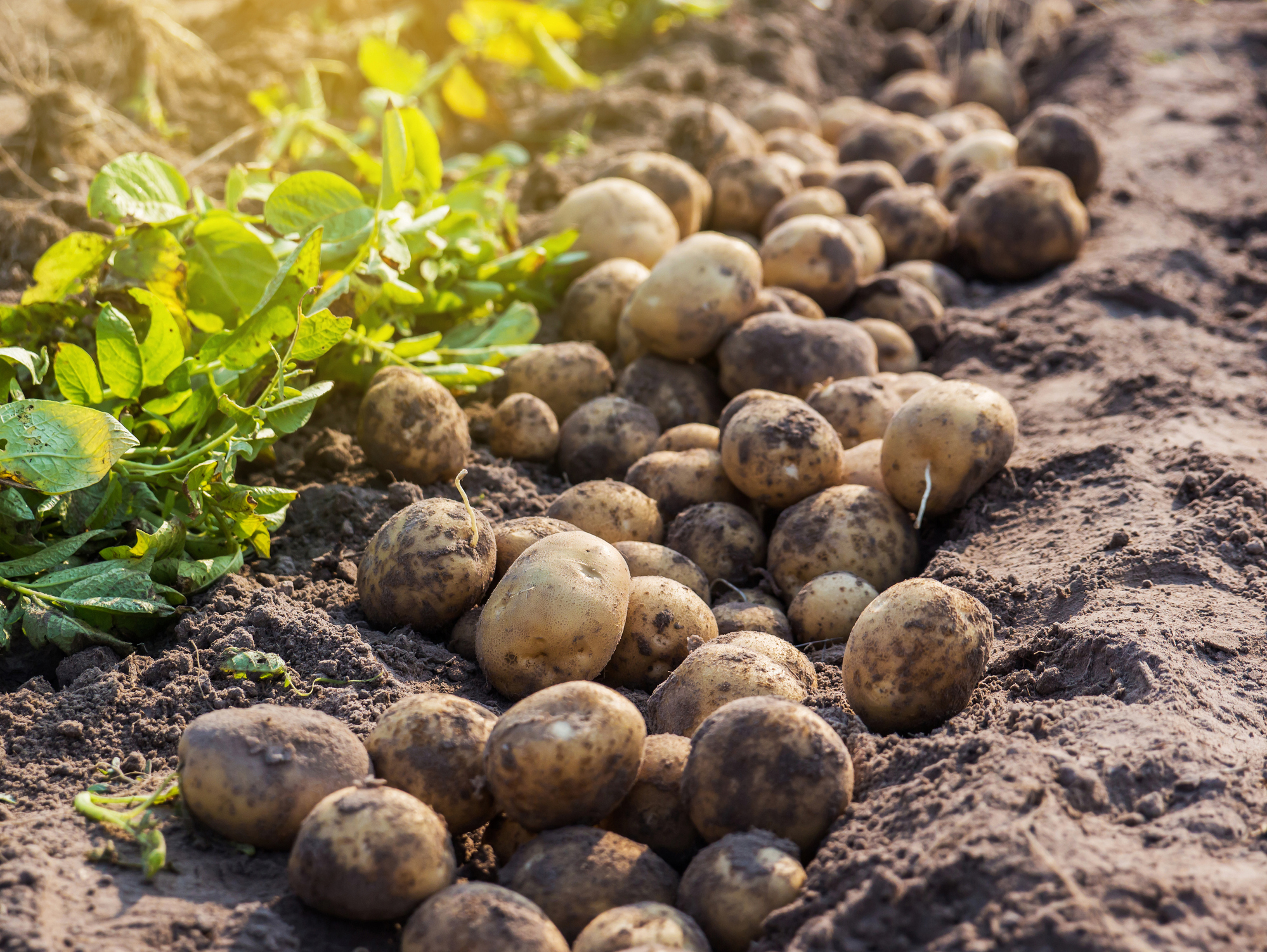Joint Starch Europe - CESPU Statement – The EU Potato Starch Value Chain Identifies Parameters to Support the Achievement of the Green Deal and Continuous Sustainable Practices in the Sector
Every year, the EU produces about 7,5 million tonnes of starch potatoes, which are further processed into 1,5 million tonnes of potato starch[1]. The whole value chain applies sustainable environmental, economic and social practices. Potato starch is a product specifically produced in the EU, but also widely consumed in third countries (about 350 000 tonnes exported per year) and qualifies as an essential ingredient in a myriad of food and non-food applications globally.
The sector supports the overall ambition of the Commission’s objectives disclosed in the Farm to Fork and the Biodiversity strategies and identified 4 parameters to support their achievements. These parameters are: predictability on available tools to deliver, clarification on available innovative alternative techniques, support to the value chain to always improve sustainable practices, and finally the necessary involvement of consumers to achieve the Green Deal’s objectives.
The EU potato starch value chain is keen to remain a competitive sector on the global scene, and to continuously improve sustainability practices and secure the supply of high-quality ingredients in sufficient quantities across the world.
Predictability is the key parameter for the supply chain to continue delivering sufficient quantities of high-quality starch potatoes and potato starch products.
The EU potato starch value is already involved in reducing the use of active substances. The EU potato starch sector and the farmers supplying starch potatoes are reliable partners supplying potato starch and derivatives to food, feed and industrial outlets. The EU Farm to Fork strategy proposes ambitious targets for the reduction of chemical pesticides (reduction by 50% of the overall use of –and risk from –chemical pesticides by 2030) and fertiliser use (reduction of use of fertilisers by at least 20%) and increased organic farming. The EU potato starch value chain is aware of concerns about chemical pesticides and potato starch processors are already working with their farmers to reduce their use.
The use of pesticides has a purpose, in particular guaranteeing food safety and crop yield under volatile growing conditions but also reducing food losses. Farmers are taking all preventive measures concerning plant health and plant protection to use pesticides to the minimum amount necessary.
Restrictions in their use must be supported by science and accompanied by alternative solutions to fight against disease, secure proper tuber conservation and avoid damages on a crop that is particularly sensitive to climatic events.
Reliable alternatives are needed to secure the continuation of the industry. The EU potato starch value chain relies on starch potato producers. A study published by the European Parliament panel for the future of science and technology (STOA) highlighted that potatoes were the most sensitive crop to the reduction of plant protection products (PPPs): “without PPPs, yields will be reduced [of] 42 % for potatoes.”[2] The concern of the potato starch value chain is to avoid that the new EU set objectives lead to market disruption of the supply in potato starch or negatively impact EU farmers’ income. The two following examples illustrate that potato farmers are already facing a critical situation: the recent bans of the active substances Mancozeb and Chlorpropham risk destabilising the market and the supply of starch potatoes, as affordable and efficient alternatives are not available.
- The fungicide Mancozeb was used to control late and early blight (Phytophthora infestans) and alternaria in potatoes. A study carried out by the British consultancy ADAS assessed a potential reduction in gross margin for potato producers of €87 million to €507 million[3]. The ban of Mancozeb use is a critical issue for starch potato growers.
- Even though rarely used by starch potato growers, the ban of Chlorpropham use contributed to significant losses for farmers of the whole potato value chain. The outbreak of the COVID 19 pandemic led to restaurant closures in several Member States, which created significant potato surpluses on the EU market. Chlorpropham is a substance used to avoid sprouting and ensuring better storage conditions for potatoes. Unfortunately, the existing alternative 1,4 DMN for ware potatoes is subject to restriction in its use: ingredients processed from treated tubers are not allowed to be used in animal feed outlets. Residues of the potato starch processing are notably used in feed applications; this strict restriction makes it impossible to use 1,4 DMN treated potatoes to produce potato starch. Absence of further alternatives lead to more food losses and significant damages for producers.
Farmers use active substances by necessity, and to adapt to climatic events notably. As presented in the Biodiversity strategy, the Commission aims at –reducing by 50% of the overall use of –and risk from –chemical pesticides by 2030, and by at least 20% of fertiliser use”. These ambitious targets must be subject to thorough impact assessments, including on their cumulative effect on the competitiveness of EU farmers, and on the EU potato starch industry. To secure predictability and the successful attainment of the EU targets, the EU potato starch value chain encourages acceleration of research support to new solutions and considering the availability of reliable alternatives when phasing out of some substances.
A clarification on the availability of innovative alternative techniques is a prerequisite for the EU potato starch value chain to consider other tools allowing to adapt to these new constraints and further improve sustainable practices.
The EU potato starch value chain hopes that the review of the EU approach to new breeding techniques will provide clarity in terms of what alternative techniques will be available. CRISP/Cas is a very promising technique, whereby genetic variation is introduced into potatoes without any new genetic material being added.
International competitors to the EU starch industry benefit from competitive advantages notably since they are able to process raw materials grown using new breeding techniques: these raw materials modifications provide better resistance towards fungi and insects and higher starch quality. Similar programs are expected on tapioca, which is another source of starch that can compete with EU potato starch.
Now out of the EU, the UK announced looking into regulations on modern breeding technology in order to open up for the use of them.
These techniques can provide a solution to ensuring the continued supply of high quality starch potatoes, in sufficient quantities to the EU processing industry. To meet this challenge, farmers need a quick access to resilient and resistant potato varieties. Resistances and tolerances against diseases, drought and heat, and nutrient efficiency are very important properties potato breeders focus in in their programs. Such techniques and other new technologies, such as more precision farming through increased digitalisation, can significantly reduce the need for active substances and can also have other environmental (decrease of the water need for instance) and nutritional benefits.
We therefore welcome the fact that the Commission Communication on Farm to Fork makes clear reference to the importance of the ongoing study on the potential of new genomic techniques and look forward to a clarification on the available techniques to improve sustainable practices in the value chain.
The potato starch value chain is a strong supporter and promoter of and contributor to the three pillars of the sustainability
Starch potatoes are fully processed into potato starch, potato proteins and fibres. With efficient and sustainable processing techniques, food losses are avoided or reduced. The production of potato starch values all components of the tuber and is a proficient and circular process that barely creates any waste. The EU potato starch value chain contributes to the environmental, social and economic pillars of sustainability:
- Contribution to the environmental pillar Starch potatoes provide the highest starch yields per hectare, more than any other crop. Starch potatoes are an asset in crop rotation helping increase biodiversity in agriculture and maintain the land in a healthy condition. In the meantime, starch potato farmers comply with EU legislation on environmental law, nitrates, land management, integrated pest management (which principles are binding to farmers), water use, cross-compliance and greening measures under the Common Agriculture Policy. Farmers limit the use of operating resources, such as fertilisers and pesticides, to what is strictly necessary.
- Contribution to the interlinked social and economic pillars: The cultivation of starch potatoes and their process into potato starch contributes to the social and economic dynamism of rural areas. Starch potatoes are often grown in areas with little opportunities for growing alternative crops. Thus, starch potatoes are an important source of income for farming and maintain employment in rural areas of the EU, and help to reach territorial balance through extension of the arable land via an optimal use of less favourable agricultural soils with a crop with a long growing season. Potato starch companies have a direct and close link with 15.000 of their growers.Potatoes cannot be stored for long periods and processing must take place in the vicinity of the farmers to avoid high transport costs. Farmers are historical local partners and/or part of cooperatives who produce exclusively in Europe. This ensures a high added value along the chain.
The economic viability of greener and more sustainable food products relies on consumer acceptance and support.
The challenge for the potato starch value chain is threefold: it is to jointly achieve the EU ambitions set in the Green Deal, to preserve the competitiveness of the sector and to continuously improve the sustainability of food systems. One of the key elements to solve this equation lies in the support of consumers: the potato starch supply chain, will need consumers to support the efforts of farmers and of the industry to improve the sustainability of products delivered. In order to help consumers opt for healthier and more sustainable diets, providing clear and science-backed information is critical. We call upon policy makers and all other stakeholders in the food value chain to adhere to these principles in the implementation of the Farm to Fork strategy. On each step we need an open, clear and honest communication and discussion about modern technologies in potato production and processing.
The EU potato starch value chain believes that these four parameters are of crucial importance to achieve the objectives set by the Commission in the Farm to Fork and Biodiversity strategies. The value chain supports these ambitions on the conditions that they can rely on these four parameters:
- predictability that secures the continuation of operations in farms and in plants,
- clear rules regarding the use of innovative alternative techniques, which can be instrumental in reaching the set objectives;
- the support to the continuous improvement of sustainable practices in the sector: efforts have been carried out over the past decades to improve practices, and we welcome support that allow pursuing these efforts; and finally
- the role of consumers is crucial and information as well as education on the sustainability of food systems is much welcome and will be supported by the potato starch value chain.
The consideration of these parameters will allow the EU potato starch value chain to support the Commission in its ambition to improve the sustainability of food systems.
[1] 2019 Starch Europe figures
[2] STOA (2019) Farming without plant protection products, (link)
[3] ADAS (2017) Mancozeb: Its Value to the EU Potato Industry, published in the Journal of Food Science and Engineering (link)

